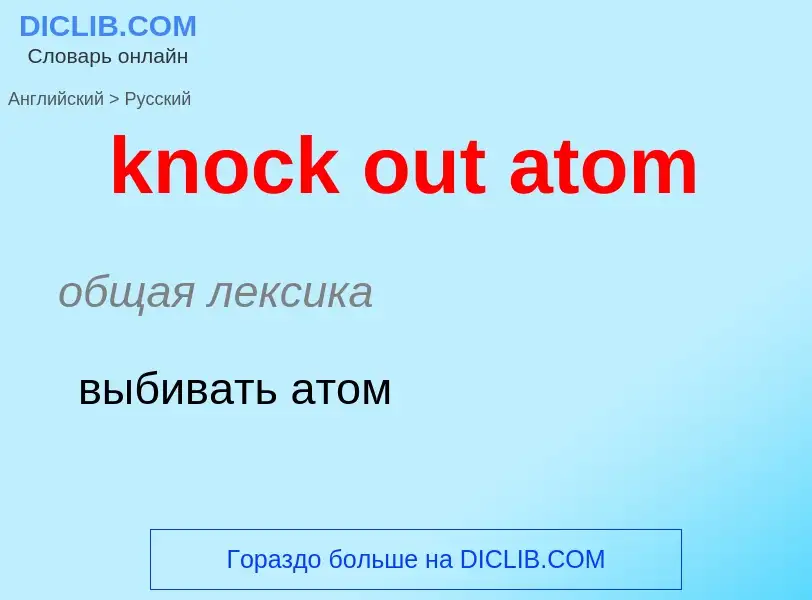Enter a word or phrase in any language 👆
Language:
Translation and analysis of words by ChatGPT artificial intelligence
On this page you can get a detailed analysis of a word or phrase, produced by the best artificial intelligence technology to date:
- how the word is used
- frequency of use
- it is used more often in oral or written speech
- word translation options
- usage examples (several phrases with translation)
- etymology
knock out atom - translation to russian
COMICS
The Knockout Comic; The Knock-Out Comic; Knock-Out Comic
knock out atom
общая лексика
выбивать атом
atomic system
SMALLEST UNIT OF A CHEMICAL ELEMENT
Atoms; Atomic chemical; Atom and Atomic Theory; Atomic structure; Polyelectronic atoms; Bound-bound; Bound-bound transition; Structure of the atom; Multielectron atom; Ancient atom; Chemical atom; Chemical Atom; Number of atoms on Earth; Polyelectronic; Monoelectronic; Atomic system
математика
атомарная (неделимая) система
atomic structure
SMALLEST UNIT OF A CHEMICAL ELEMENT
Atoms; Atomic chemical; Atom and Atomic Theory; Atomic structure; Polyelectronic atoms; Bound-bound; Bound-bound transition; Structure of the atom; Multielectron atom; Ancient atom; Chemical atom; Chemical Atom; Number of atoms on Earth; Polyelectronic; Monoelectronic; Atomic system
строение атома
Definition
стек
СТЁК, стёкся, стекла, стеклась. прош. вр. от стечь
, стечься.
, стечься.
II. СТЕК [стэк], стека, ·муж. (·англ. stick) (спорт.). Твердый, эластичный хлыст, употр. при верховой езде.
Wikipedia
Knockout (UK comics)
Knockout may refer to one of two British comics. The original series, published by the Amalgamated Press (later Fleetway Publications), started on 4 March 1939 and ended on 16 February 1963, when it merged with Valiant. The second series, published by IPC Magazines, ran from 12 June 1971 to 23 June 1973, when it merged with Whizzer and Chips.


![hydrogen-like]] atomic orbitals showing probability density and phase ('''g''' orbitals and higher are not shown) hydrogen-like]] atomic orbitals showing probability density and phase ('''g''' orbitals and higher are not shown)](https://commons.wikimedia.org/wiki/Special:FilePath/Atomic-orbital-clouds spdf m0.png?width=200)

![Graphic illustrating the formation of a [[Bose–Einstein condensate]] Graphic illustrating the formation of a [[Bose–Einstein condensate]]](https://commons.wikimedia.org/wiki/Special:FilePath/Bose Einstein condensate.png?width=200)
![Atoms and molecules as depicted in [[John Dalton]]'s ''A New System of Chemical Philosophy'' vol. 1 (1808) Atoms and molecules as depicted in [[John Dalton]]'s ''A New System of Chemical Philosophy'' vol. 1 (1808)](https://commons.wikimedia.org/wiki/Special:FilePath/Daltons symbols.gif?width=200)
